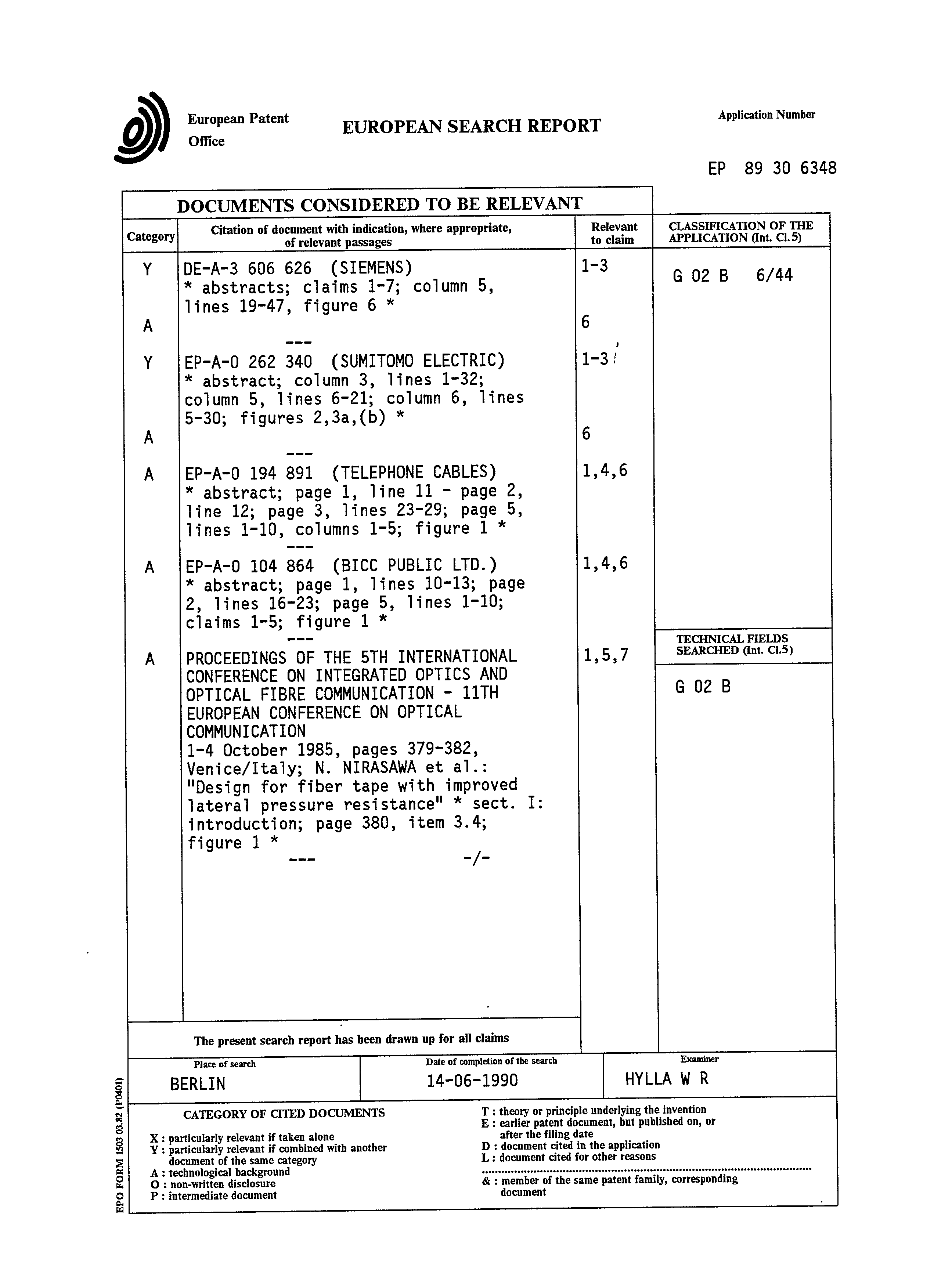| (19) |
 |
|
(11) |
EP 0 349 206 A3 |
| (12) |
EUROPEAN PATENT APPLICATION |
| (88) |
Date of publication A3: |
|
05.09.1990 Bulletin 1990/36 |
| (43) |
Date of publication A2: |
|
03.01.1990 Bulletin 1990/01 |
| (22) |
Date of filing: 23.06.1989 |
|
| (51) |
International Patent Classification (IPC)5: G02B 6/44 |
|
| (84) |
Designated Contracting States: |
|
DE ES FR SE |
| (30) |
Priority: |
30.06.1988 US 213876
|
| (71) |
Applicant: AT&T Corp. |
|
New York, NY 10013-2412 (US) |
|
| (72) |
Inventors: |
|
- Jackson, Kenneth W.
Snellville
Georgia 30278 (US)
- Lochkovic, Gregory Alan
Lawrenceville
Georgia 30243 (US)
- Patel, Parbhubhai D.
Dunwoody
Georgia 30338 (US)
- Pearsall, Michael L.
Duluth
Georgia 30136 (US)
- Petisce, James R.
Norcross
Georgia 30093 (US)
|
| (74) |
Representative: Johnston, Kenneth Graham et al |
|
Lucent Technologies (UK) Ltd,
5 Mornington Road
Woodford Green
Essex, IG8 OTU
Woodford Green
Essex, IG8 OTU (GB) |
|
| |
|
| (54) |
Bonded array of transmission media |
(57) A bonded optical fiber array (20) includes a parallel coplanar array of longitudinally
extending contacting optical fibers (22-22). Each optical fiber is enclosed in inner
and outer layers of coating materials and is provided with a color identifier. The
inner layer is comprised of a UV curable bonding material having a modulus in the
range of about 1 M Pa. For mechanical protection, the outer layer is a UV curable
bonding material having a modulus in the range of about 1 GPa. When the optical fibers
are disposed in the parallel array, interstices are created between the fibers and
between the fibers and an envelope which is spaced no further than about 25 µm at
its closest point to each fiber. A UV curable matrix bonding material which has a
modulus having a value less than that of the outer coating layer on the fiber and
more than that of the inner coating layer fills the interstices, extends to the peripheral
line which defines the envelope and bonds together the optical fibers. The modulus
of the matrix material and the bond of the matrix material to the color identifier
on the optical fibers is such that interfiber and interribbon movement is allowed.
Also, accessing of the individual fibers is allowed upon the application of peeling
forces by a craftsperson without the need for complex tools and without obfuscating
the color identifier.


